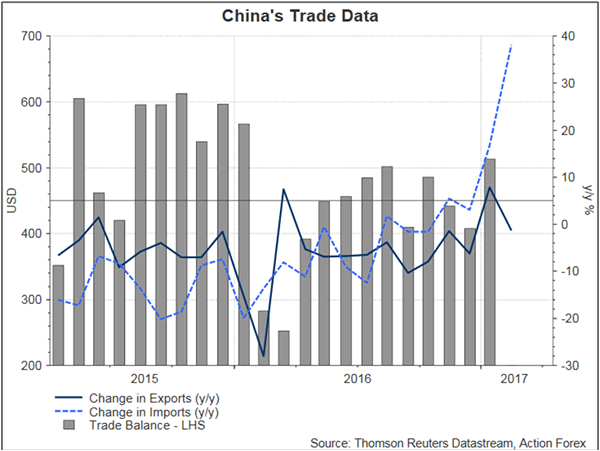The latest inflation report continues to portray a subdued CPI, high PPI environment in China. Headline CPI improved to +0.9% y/y in March from +0.8% a month ago. The market has anticipated stronger pickup to +1%. Core inflation (excluding food and energy) rose +2% y/y, up from +1.8% in February. The decline in food prices deepened to -4.4% y/y from -4.3% in February. Nonfood inflation improved modestly to +2.3% y/y, up from +2.2% in February. PPI eased to +7.6% in March, from +7.8% in the prior month, compared with consensus of +7.5%. Both seasonal factors and moderation in the commodity price rally were key reasons for the slowdown. Lunar New Year in the first week of February pushed prices higher and absence of such factor was reflected in the March reading. Meanwhile, mining input prices gained +3.7% y/y in March, compared with a +36.1% y/y rally in the prior month. Oil and gas price, gaining +68.5% y/y in the month, was the biggest driver of PPI inflation last month. We expect PPI to stay high in coming months but growth would be more gradual due to strong base effect. Meanwhile, the rally in commodity prices over the past months is seen passing through to downstream CPI.
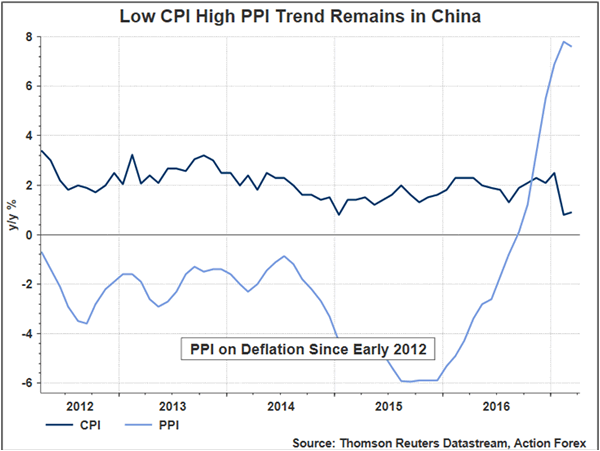
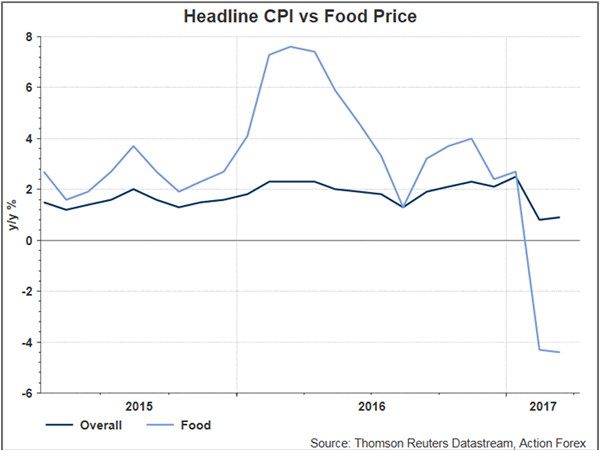
As we mentioned in previous reports, the Chinese government has adopted monetary tightening measured targeting the asset markets in order to prevent macro risks and sustain stable social and economic developments and prevention of macro risks. We believe the government’s tightening policy would remain confined to interbank tightening. The probability of raising benchmark interest rates stays low, as headline inflation remains subdued. Rather, this might lead to more chances of liquidity injection into the market.
China’s FX reserve stayed about US$ 3 trillion in March, as the government’s strict capital control measures adopted since the beginning of this year helped curb the depreciation in renminbi. FX reserve increased +US$ 3.96M to US$3.01 trillion in March, marking a second consecutive monthly but decelerated growth in the series. Yet, FX reserve stays -24.6% below the peak made in June 2014. Renminbi has stabilized so far this year. USDCNY fell -0.86% in 1Q17, after gaining over the past three consecutive quarters (up +7.53% in total). Besides China’s capital control effort, pullback in US dollar also helped stabilize renminbi. During the first quarter, USD index DXY was down -1.82%.Again, we suggest to wait for PBOC’s FX position and SAFE flow data before judging capital flow situation in China.
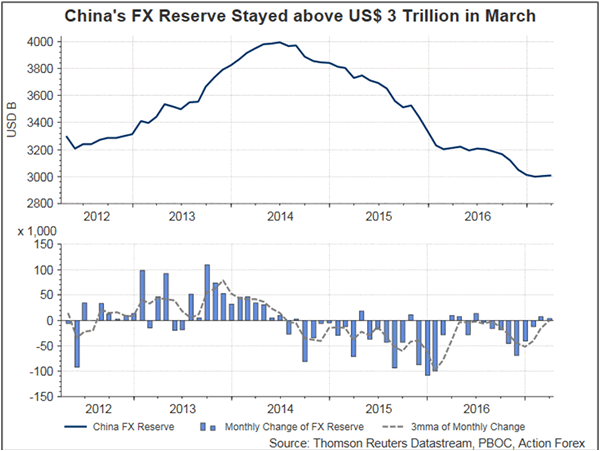
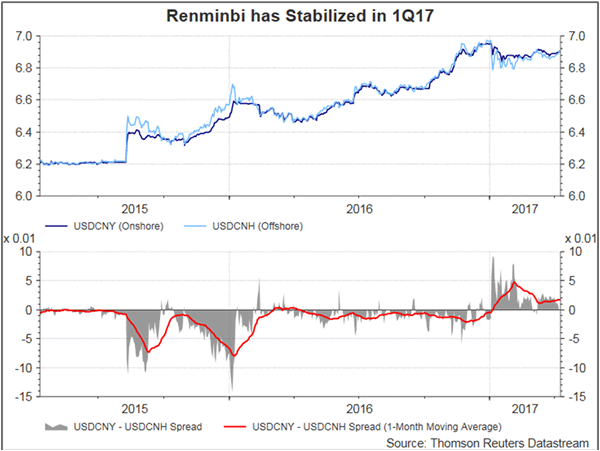
China would release its March trade report on Thursday (April 13) with a surplus of US$ 12.5B, following a deficit of 9.1B in the prior month. In February, imports soared +44.7% y/y while exports gained +4.2% y/y, compared with growths of +15.9% and +25.2%, respectively, in January. The sharp rise in imports might indicate improvement in domestic demand
